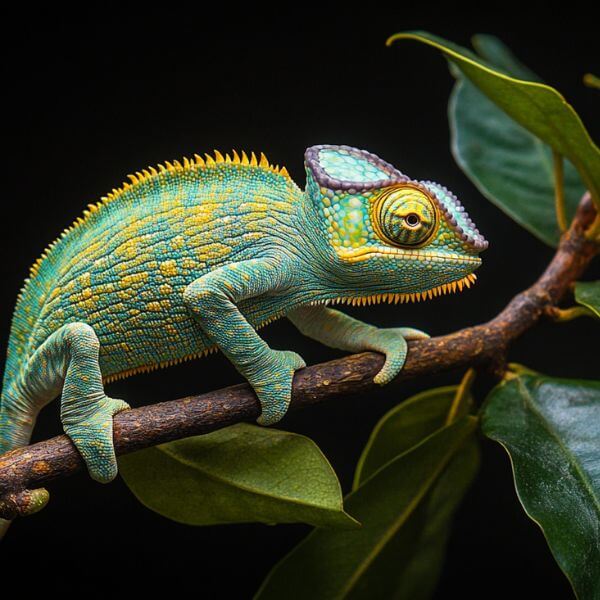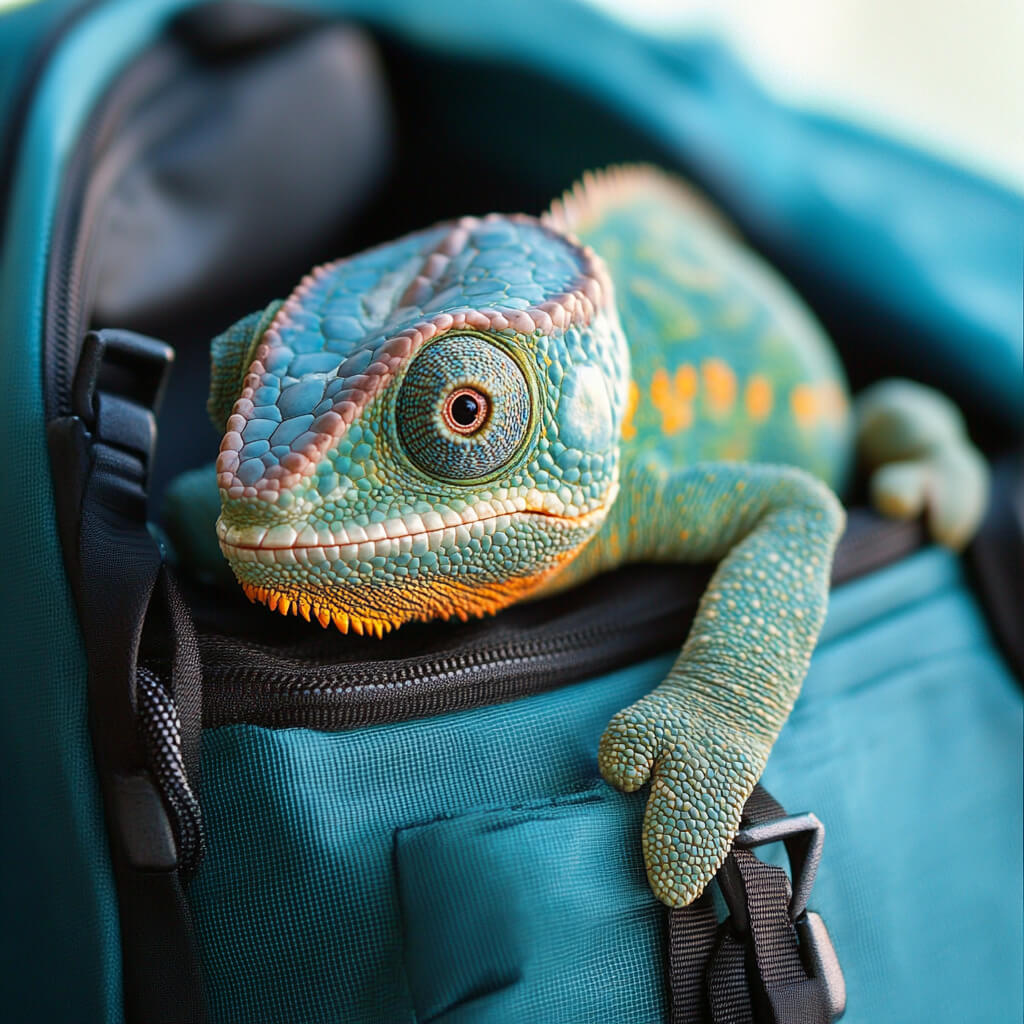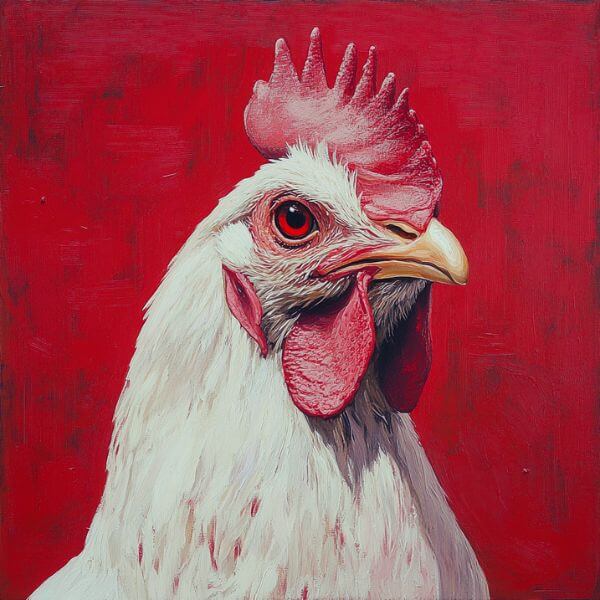Yes, chameleons can eat june bugs!
While june bugs aren’t toxic to chameleons, there are some things to consider before you start a june bug buffet.
What are june bugs?
June bugs, also called May beetles, are chunky, reddish-brown beetles that show up in late spring and early summer.

They’re about the size of your thumb and make a buzzing sound when they fly. Here’s a quick rundown:
| Feature | Description |
| Size | 0.5 to 1 inch long |
| Color | Reddish-brown to black |
| Wings | Hard wing covers (elytra) |
| Antennae | Fan-like antennae |
| Activity | Nocturnal (active at night) |
Habitat and lifecycle
These bugs live all over North America.
They spend most of their life underground as grubs (larvae) munching on plant roots.
After 1-3 years, they become adults and come out to party in the warmer months.
Size considerations for chameleon consumption
June bugs are pretty big compared to the insects chameleons usually eat. Here’s a size comparison:
| Insect | Average size |
| Cricket | 0.5 – 1 inch |
| Fly | 0.2 – 0.3 inches |
| June bug | 0.5 – 1 inch |
As you can see, june bugs are on the larger side. This means they might be too big for some chameleons, especially younger or smaller ones.
Always make sure the bugs you feed your chameleon are no bigger than the space between its eyes.
Risks associated with wild-caught insects
Catching bugs from outside might seem fun, but it can be risky.
Wild insects might carry parasites or diseases that could harm your chameleon.
It’s like letting your pet eat food off the sidewalk – not the best idea!
Possible digestive complications
Remember how big june bugs are?
Well, their hard shell can be tough for chameleons to digest.
This could lead to tummy troubles for your scaly friend.
Alternatives to june bugs
Don’t worry if you decide june bugs aren’t the best choice for your chameleon.
There are plenty of other yummy (for chameleons, at least) options!
Safe commercially available feeder insects
Here’s a list of insects that are safe and easy to find for your chameleon:
- Crickets
- Dubia roaches
- Mealworms
- Waxworms (as a treat)
- Silkworms
Nutritional comparison of feeder insects
Let’s look at how these insects stack up nutritionally:
| Insect | Protein | Fat | Calcium |
| Crickets | High | Low | Low |
| Dubia roaches | High | Low | Medium |
| Mealworms | Medium | High | Low |
| Waxworms | Low | Very high | Low |
| Silkworms | High | Low | High |
As you can see, different insects offer different nutritional benefits. Mix it up to give your chameleon a balanced diet!
Best practices for feeding insects to chameleons
Now that we know what to feed, let’s talk about how to feed your chameleon.
Gut-loading insects for optimal nutrition
“Gut-loading” sounds gross, but it’s super important! It means feeding the insects nutritious foods before giving them to your chameleon.
Think of it like stuffing a turkey, but for bugs!
Feeding frequency and portion control
How often should you feed your chameleon? It depends on their age:
- Baby chameleons: 2-3 times a day
- Young chameleons: Once a day
- Adult chameleons: Every other day
Portion-wise, offer as many insects as your chameleon can eat in about 15 minutes.
FAQs
Are june bugs toxic to chameleons?
Nope, june bugs aren’t toxic. But they might carry pesticides or be hard to digest.
How often should I feed insects to my chameleon?
It depends on age. Baby chameleons eat 2-3 times a day, young ones once a day, and adults every other day.
Can baby chameleons eat june bugs?
It’s best to avoid giving june bugs to baby chameleons. They’re too big and hard for little ones to eat safely.
What size insects are appropriate for chameleons?
A good rule of thumb is to offer insects no larger than the space between your chameleon’s eyes.
How can I ensure the insects I feed my chameleon are safe?
Buy from reputable pet stores or breed your own. Avoid wild-caught insects to reduce the risk of parasites or pesticides.
Conclusion
So, can chameleons eat june bugs? While they can, it might not be the best choice for their regular diet.
There are safer and more nutritious options out there.
Remember, a happy chameleon is a well-fed chameleon with a varied diet of appropriately sized insects.
Keep your scaly friend healthy by offering a mix of safe, gut-loaded insects.
And hey, maybe save those june bugs for the birds instead! Happy chameleon feeding, folks! 🦎







Leave a Reply